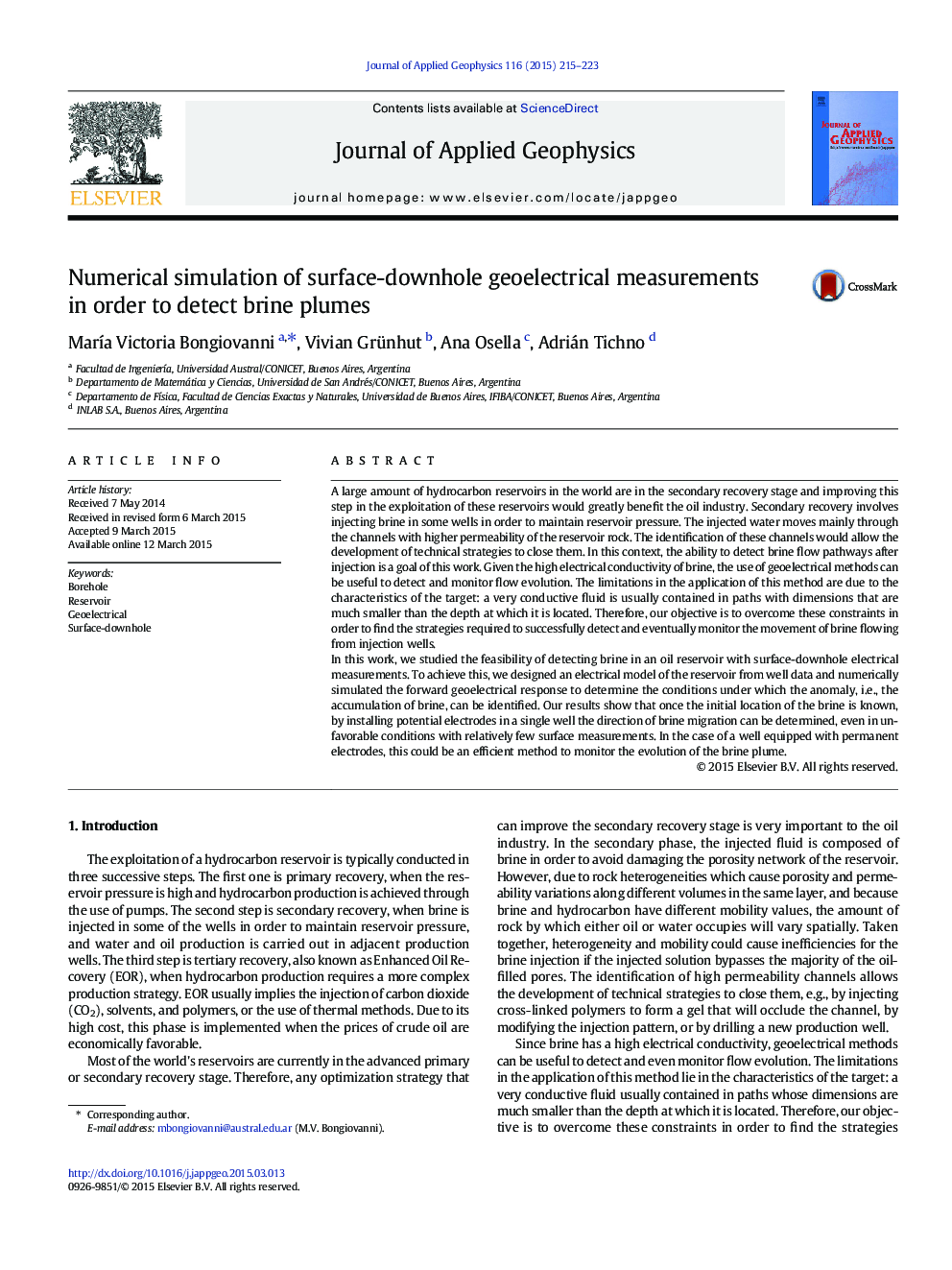| کد مقاله | کد نشریه | سال انتشار | مقاله انگلیسی | نسخه تمام متن |
|---|---|---|---|---|
| 4739970 | 1641135 | 2015 | 9 صفحه PDF | دانلود رایگان |
• 3D forward geoelectrical method is used as a tool for detecting the flow pathways of the brine in an oil reservoir.
• Electrical model of the reservoir is done.
• Abaqus code with surface-downhole configurations is used.
• Limitations of detectability criterion are also discussed.
A large amount of hydrocarbon reservoirs in the world are in the secondary recovery stage and improving this step in the exploitation of these reservoirs would greatly benefit the oil industry. Secondary recovery involves injecting brine in some wells in order to maintain reservoir pressure. The injected water moves mainly through the channels with higher permeability of the reservoir rock. The identification of these channels would allow the development of technical strategies to close them. In this context, the ability to detect brine flow pathways after injection is a goal of this work. Given the high electrical conductivity of brine, the use of geoelectrical methods can be useful to detect and monitor flow evolution. The limitations in the application of this method are due to the characteristics of the target: a very conductive fluid is usually contained in paths with dimensions that are much smaller than the depth at which it is located. Therefore, our objective is to overcome these constraints in order to find the strategies required to successfully detect and eventually monitor the movement of brine flowing from injection wells.In this work, we studied the feasibility of detecting brine in an oil reservoir with surface-downhole electrical measurements. To achieve this, we designed an electrical model of the reservoir from well data and numerically simulated the forward geoelectrical response to determine the conditions under which the anomaly, i.e., the accumulation of brine, can be identified. Our results show that once the initial location of the brine is known, by installing potential electrodes in a single well the direction of brine migration can be determined, even in unfavorable conditions with relatively few surface measurements. In the case of a well equipped with permanent electrodes, this could be an efficient method to monitor the evolution of the brine plume.
Journal: Journal of Applied Geophysics - Volume 116, May 2015, Pages 215–223
